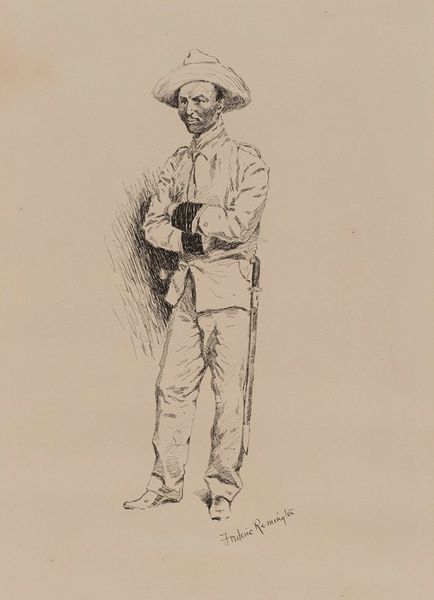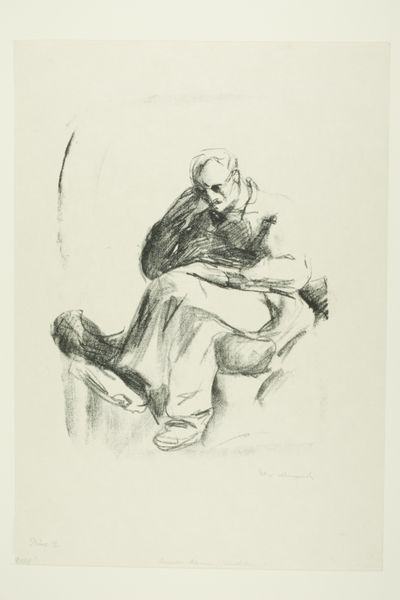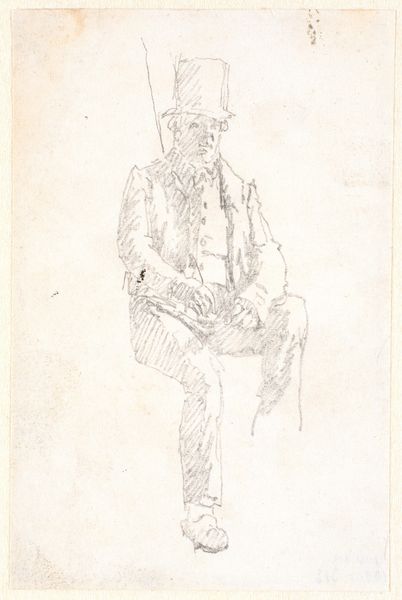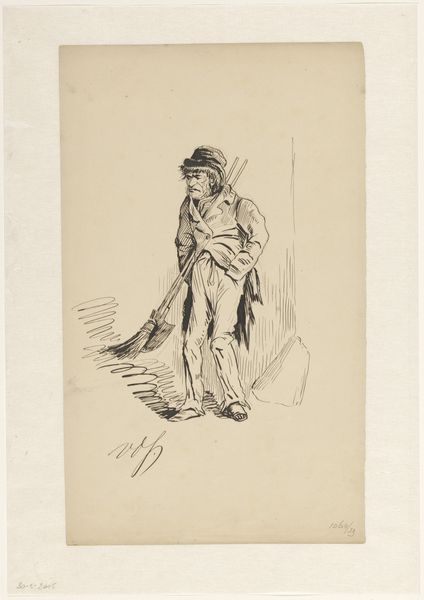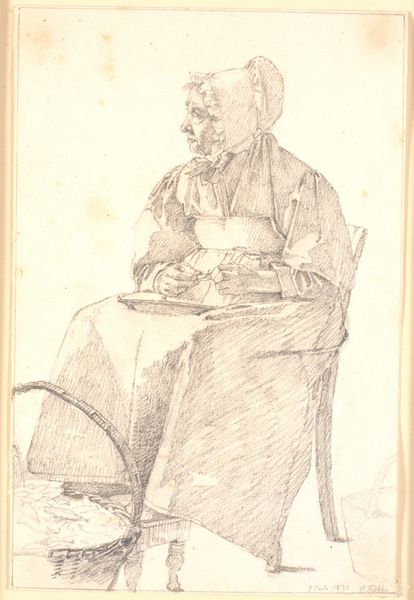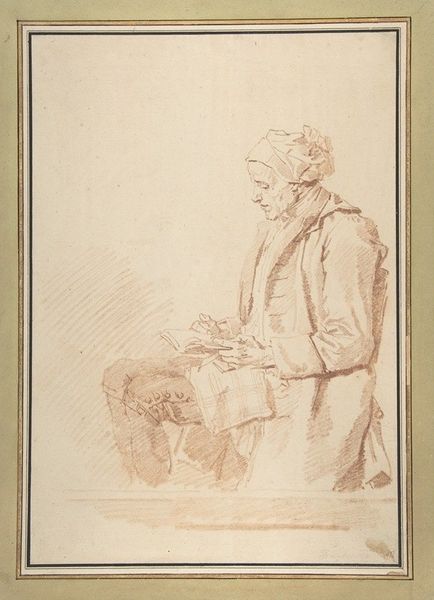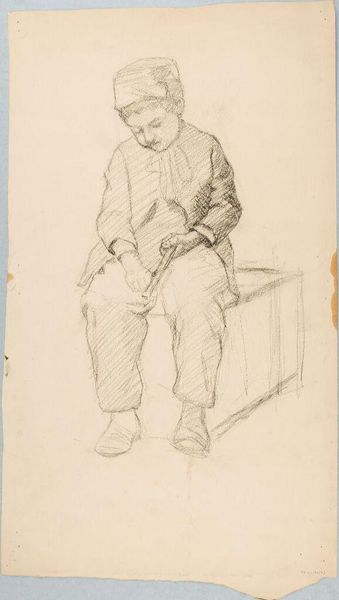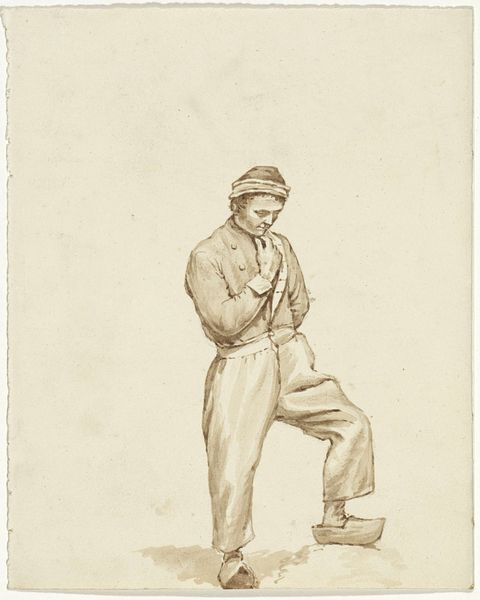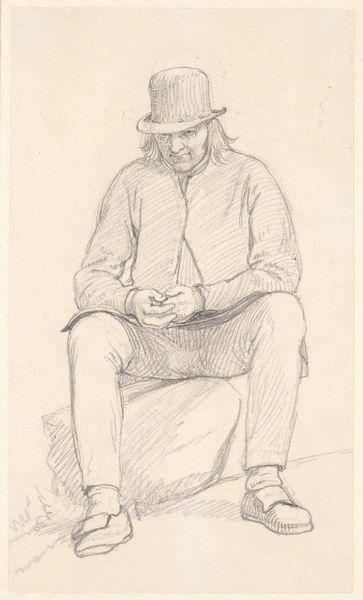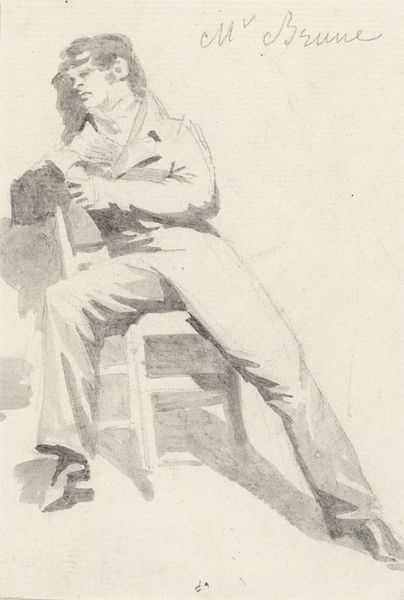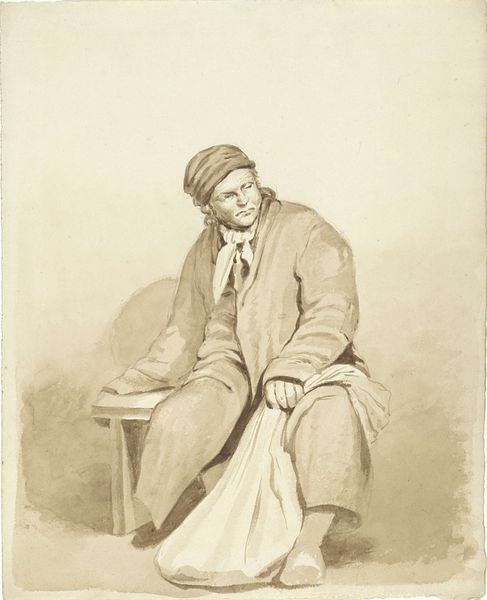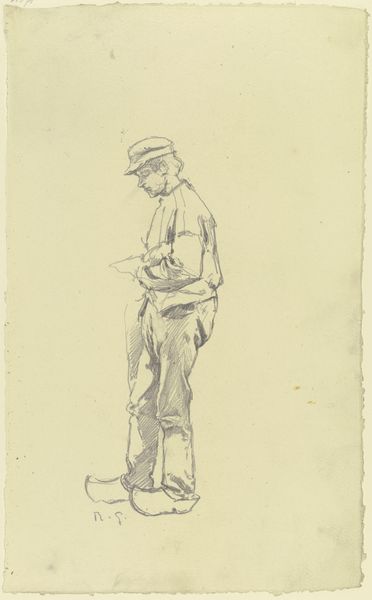
drawing, pencil
#
portrait
#
drawing
#
etching
#
pencil drawing
#
pencil
#
genre-painting
#
realism
Dimensions: 305 mm (height) x 206 mm (width) (bladmaal)
Curator: Let's examine this compelling piece titled "Siddende ældre mand," or "Sitting Old Man," by Carl Thomsen, created around 1873. It’s rendered in pencil on paper, offering a snapshot of quiet contemplation. Editor: My immediate reaction is one of gentle melancholy. The spare lines, the way the figure seems to be enveloped by the negative space... it suggests a weight of years. Curator: Indeed. The artist’s strategic use of line weight creates depth, pulling our focus to the sitter’s hands and face. Note how the hat, and what appears to be either his collar or cravat, visually enframe the face—drawing the viewer’s eyes, and intensifying its emotional expression, within this study in portraiture. Editor: I'm struck by the universality of the image. The man's posture—hands clasped, slightly hunched—is indicative of a certain type of weary reflection that transcends specific time or place. This is an old man reckoning with time passing. I see an archetypal figure. Curator: A convincing reading, and certainly relevant, but it’s also fascinating to analyze this drawing’s composition independent of the emotional element. See the repeated verticals of the garment and legs and, again, in the man’s hat or cap. How do you think they guide or organize the eye? Editor: The hat gives him the air of a simple working man. Perhaps this simple genre portrait reflects a pride in common values during a tumultuous period in Denmark’s cultural history. He also could be impoverished, judging from his worn appearance. He may also be someone elderly enjoying an earned retirement. Curator: These realistic features ground us in that late 19th-century period. But focusing on the form of the artwork in itself, Thomsen’s attention to capturing textures and lines shows not just an ability to render likeness but to articulate what it meant to portray aging—especially its psychological effect on the face. Editor: It seems to me this pencil work has several symbolic implications, of course. The plain garb and setting seem deliberately stark, almost devoid of narrative trappings so common in 19th century portraits. The lack of clear social markers makes the subject universally accessible, evoking a shared human story. Curator: That may well have been Thomsen’s intention; certainly, this genre artwork achieves considerable emotive and historical weight. Editor: Indeed, a relatively minor portrait holds surprising depths of symbolic resonance.
Comments
No comments
Be the first to comment and join the conversation on the ultimate creative platform.

